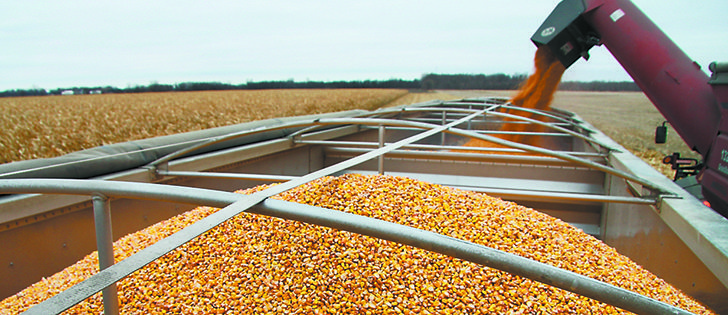Biotechnology investment | New technology that will bring improved corn and soybean varieties will come from the U.S. and Europe
If there are any doubts about the future of corn and soybeans in Western Canada, the best location for guidance is North Dakota’s Cass County, says Bill Wilson, a North Dakota State University professor.
Beans were a specialty crop in the county 15 years ago, grown primarily for the tofu market.
“Today, we are the largest single producing county of soybeans in America,” Wilson said during a lecture at the University of Manitoba in late October.
Since 1995, soybeans and corn have gobbled up North Dakota acres at the expense of spring wheat, barley and durum, Wilson said, pointing to a map illustrating the northward and westward expansion of the U.S. corn-soy belt.
Read Also

New coal mine proposal met with old concerns
A smaller version of the previously rejected Grassy Mountain coal mine project in Crowsnest Pass is back on the table, and the Livingstone Landowners Group continues to voice concerns about the environmental risks.
According to the NDSU website, small grains were planted on 71 percent of all cropland in North Dakota in 1996, while corn and soybeans represented seven percent of the land base.
However, small grains had 38 percent of seeded acres by 2013 and corn and beans represented 40 percent of plantings.
Given that trend and recent biotech announcements, it’s almost certain that corn and beans will spread northwest into Western Canada, Wilson said.
In June, Monsanto announced its plans to spend $100 million over the next decade to develop corn varieties that mature in 70 to 85 days, with the objective of eight to 10 million corn acres on the Prairies by 2025.
“And all of the technology companies said they’re going to do the same thing,” said Wilson, who consults with Fortune 500 companies, governments and institutions around the globe on grain marketing, logistics and trade.
“That’s a big story. It will have a huge impact on agriculture throughout all of North America.”
North Dakota farmers regularly grew 11 million acres of spring, durum and winter wheat in the mid-1990s, but by this year all wheat acreage had fallen below seven million acres.
Wilson said the acreage loss isn’t surprising, considering the relative returns on corn, beans and wheat.
Wilson said estimated returns for corn near Jamestown, N.D., were $175 an acre this year and $100 per acre for beans.
“Returns for wheat are about $50 an acre.”
Ed Tyrchniewicz, a senior scholar in the U of M’s agribusiness department, said it’s concerning that prairie farmers must rely on non-Canadian firms for biotech investment.
“A lot of those companies are American or European companies and really we’re very much like a branch plant,” he said, following Wilson’s lecture.
“It is not cutting edge (research) here…. We’ve cut way back not only on GM (genetically modified) research, but on agricultural research in general in Canada…. I think we have to try to keep pace with the rest of the world, in terms of the private sector and the public sector (investment).”
Wilson said the amount of private money invested into seeds and traits for corn, soybeans and other GM crops swamps the investment in wheat.
He estimated that Monsanto now spends $1.8 billion a year on such research. Other biotech firms spend less, but figures are rising.
“You take all these numbers and put them together, these companies are spending $8 to $10 per acre, per year, on research,” he said.
“How much do we spend on wheat research in America? Seventy cents per acre, per year. How much do you spend? Forty cents, per acre per year. Is it any wonder the nature of change we have.”


















